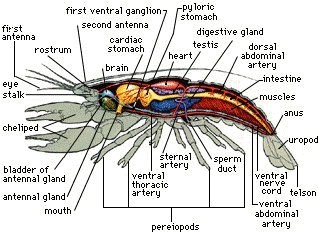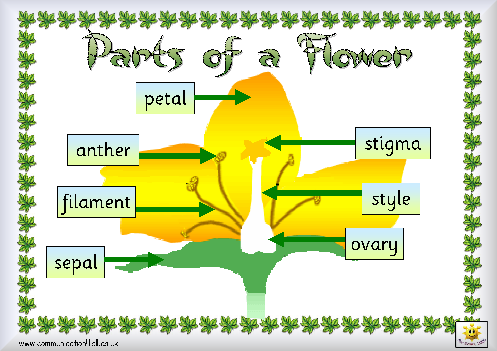Blog 13 What was most interesting about this week's dissections?
The fact that we can explore how their body works is intresting. I was amazed about the crawfish having only 1 claw. It is pretty normal for them to have one because they live in the sewer. Looking at the frog and cricket was sick and amazing at the same time. It was nasty, but i just wanted to touch it. I cannot wait until we dissect the cricket and the frog.
Anthony's blog
Monday, June 6, 2011
Thursday, May 26, 2011
Final blog
Final blog
Reflect on your semester and year in biology What were your successes? What were your failures?
What did you learn that you will never forget?
My sucess is learning a lot about Biology and the animals that live in the world. Everything is amazing because of how they live and survive. Animals and insects are just like us, living to stride. My failures were learning some things, i just couldn't remeber or understand some stuff. I will never forget the dissections that we have this week, so many dissections, you kind of get tired of it. Biology class was pretty okay, i liked that we could do blogs because spending every thursday inside a classroom is boring compared to spending it in a computer lab.
Reflect on your semester and year in biology What were your successes? What were your failures?
What did you learn that you will never forget?
My sucess is learning a lot about Biology and the animals that live in the world. Everything is amazing because of how they live and survive. Animals and insects are just like us, living to stride. My failures were learning some things, i just couldn't remeber or understand some stuff. I will never forget the dissections that we have this week, so many dissections, you kind of get tired of it. Biology class was pretty okay, i liked that we could do blogs because spending every thursday inside a classroom is boring compared to spending it in a computer lab.
Thursday, May 19, 2011
Blog 13
- Blog 13 What was most interesting about this week's dissections?

Thursday, May 5, 2011
Blog #12
Blog#12 What surprised you from the worm's dissection?
What surprised me the most was the inside of the worm. It was a a long thin black line. If you cut it too hard, dirt comes out. That is the intestine, i tried to avoid it as much as possible. Dissecting the worm, i notice it oozes a lot of water out. It made the whole towel kind of wet. But i learned a lot from dissecting this, they have pretty small parts and no eyes. All movements and they help our environment a lot.
What surprised me the most was the inside of the worm. It was a a long thin black line. If you cut it too hard, dirt comes out. That is the intestine, i tried to avoid it as much as possible. Dissecting the worm, i notice it oozes a lot of water out. It made the whole towel kind of wet. But i learned a lot from dissecting this, they have pretty small parts and no eyes. All movements and they help our environment a lot.
Thursday, April 21, 2011
Blog #11
Blog #11
Get a picture of alternation of generations put it in your blog and explain how it relates to plants
Get a picture of alternation of generations put it in your blog and explain how it relates to plants
It all starts with the pollen being released to a plant, thus growing it into a tree and repeat.
Thursday, April 14, 2011
Blog #10
Blog #10
Why is dissection an important part of a biology curriculum? Which animals and/or plants should be included in biological studies?
Dissection is important because it shows us students how the body works for whatever we are learning about. This can prepare us if we want to pursuit a career in science or just teach us where parts belong where. Plus dissecting is fun, you get to cut open things and observe things you have never seen before. Animals that should be dissected would be like Lions, elephants, aligators, whale and other animals that they have in school. I'm not really that intrested in plants, but it's still good to learn about plants and how they funcion.
Why is dissection an important part of a biology curriculum? Which animals and/or plants should be included in biological studies?
Dissection is important because it shows us students how the body works for whatever we are learning about. This can prepare us if we want to pursuit a career in science or just teach us where parts belong where. Plus dissecting is fun, you get to cut open things and observe things you have never seen before. Animals that should be dissected would be like Lions, elephants, aligators, whale and other animals that they have in school. I'm not really that intrested in plants, but it's still good to learn about plants and how they funcion.
Thursday, April 7, 2011
Blog 9
Define the different forms of community interaction: competition, commensalism, mutualism, predation, parasitism Give an example and a picture for each.
 Type of community interaction is competition. Competition is an interaction between species or organisms and the fitness of one is lowered by the presence of the other. Competition can occur when the species are competing in the same area for a limited food supply or when they must share limiting resources. Species less suited to compete for resources either adapt or die out. That is why if something is off the food chain, it could majorly hurt the species.
Type of community interaction is competition. Competition is an interaction between species or organisms and the fitness of one is lowered by the presence of the other. Competition can occur when the species are competing in the same area for a limited food supply or when they must share limiting resources. Species less suited to compete for resources either adapt or die out. That is why if something is off the food chain, it could majorly hurt the species.
 Community interaction is commensalism. Commensalism is a relationship between 2 organisms where one organism benefits from the other, but the other organism is not harmed but also does not benefit from the relationship. An example of commensalism is like the relationship between the sun and the plants. The plants benefit from the sun's sunlight, but the sun does not benefit from the plants, nor is it harmed by the plants. Us humans, need the plants to produce oxygen for us to breathe. Without it, our body's would intake all the bad air.
Community interaction is commensalism. Commensalism is a relationship between 2 organisms where one organism benefits from the other, but the other organism is not harmed but also does not benefit from the relationship. An example of commensalism is like the relationship between the sun and the plants. The plants benefit from the sun's sunlight, but the sun does not benefit from the plants, nor is it harmed by the plants. Us humans, need the plants to produce oxygen for us to breathe. Without it, our body's would intake all the bad air.
Mutualism is the relationship between two organisms, where both organisms benefit from each other. An example of mutualism is bees and flowers. They all benefit from each other. When the bee polinates the flower, the flower loses the polen it carried and has room to produce more. The bee on the other hand comes back with polen and food. They continue this and because it helps both species out.
 Type of community interaction is competition. Competition is an interaction between species or organisms and the fitness of one is lowered by the presence of the other. Competition can occur when the species are competing in the same area for a limited food supply or when they must share limiting resources. Species less suited to compete for resources either adapt or die out. That is why if something is off the food chain, it could majorly hurt the species.
Type of community interaction is competition. Competition is an interaction between species or organisms and the fitness of one is lowered by the presence of the other. Competition can occur when the species are competing in the same area for a limited food supply or when they must share limiting resources. Species less suited to compete for resources either adapt or die out. That is why if something is off the food chain, it could majorly hurt the species. Community interaction is commensalism. Commensalism is a relationship between 2 organisms where one organism benefits from the other, but the other organism is not harmed but also does not benefit from the relationship. An example of commensalism is like the relationship between the sun and the plants. The plants benefit from the sun's sunlight, but the sun does not benefit from the plants, nor is it harmed by the plants. Us humans, need the plants to produce oxygen for us to breathe. Without it, our body's would intake all the bad air.
Community interaction is commensalism. Commensalism is a relationship between 2 organisms where one organism benefits from the other, but the other organism is not harmed but also does not benefit from the relationship. An example of commensalism is like the relationship between the sun and the plants. The plants benefit from the sun's sunlight, but the sun does not benefit from the plants, nor is it harmed by the plants. Us humans, need the plants to produce oxygen for us to breathe. Without it, our body's would intake all the bad air.Mutualism is the relationship between two organisms, where both organisms benefit from each other. An example of mutualism is bees and flowers. They all benefit from each other. When the bee polinates the flower, the flower loses the polen it carried and has room to produce more. The bee on the other hand comes back with polen and food. They continue this and because it helps both species out.
Subscribe to:
Posts (Atom)









